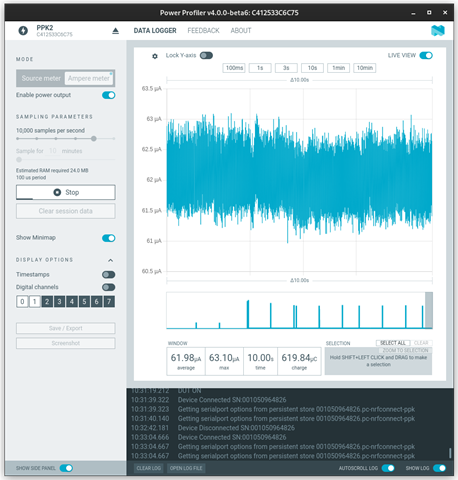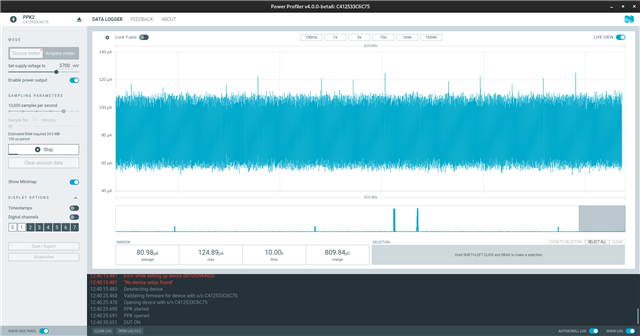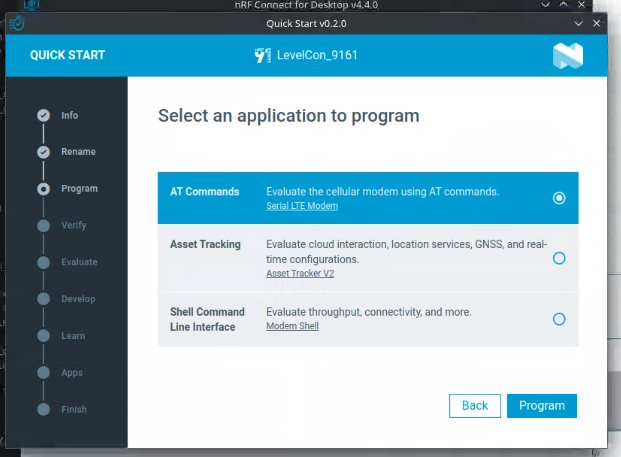Hello all,
We are taking our power measurements on NRF9161 DK board PCA10153 0.9.1. We are using NB-IoT for the LPWAN conection We are supplying power to the board using the source meter mode on the NRFPPK2. To confirm that sim shut off is possible on our sim, we captured the AT+CRSM command output as below.
> AT+CRSM=176,28589,0,0,0 +CRSM: 144,0,"01000803" OK
According to this post, our sim is capable of sim shutodown. But still our sim is consuming 62uA of current during the eDRX cycles. Below is the screen shot of the sim current measurement of ~62uA.

Next, we tried taking current measurement for the e-DRX cycle. Cycle of 81.92s and PTW of 5.12s.
> AT%XDATAPRFL? %XDATAPRFL: 0 > at+cedrxs=2,5,"0101" OK > at+cfun=1 OK +CEDRXP: 5,"0101","0101","0011" > at%xptw=5,"0001" OK +CEDRXP: 5,"0101","0101","0001" > at#xsleep=2 OK
We see that the NRF9161 is consuming high current as compatred to NRF9160. Below is the screenshot of measured current consumption

Average measured current over a period of 10 minutes is 208uA seen in the image above.
With all the above information, we would like to report two bugs
- Sim is not turning off during the e-DRX cycle
-
Floor current too high assuming sim is off during the edrx cycle. Currently with sim in ON state the floor current is 81uA

I am attaching the modem trace logs on this thread. Can someone from nordic look into this issue?



